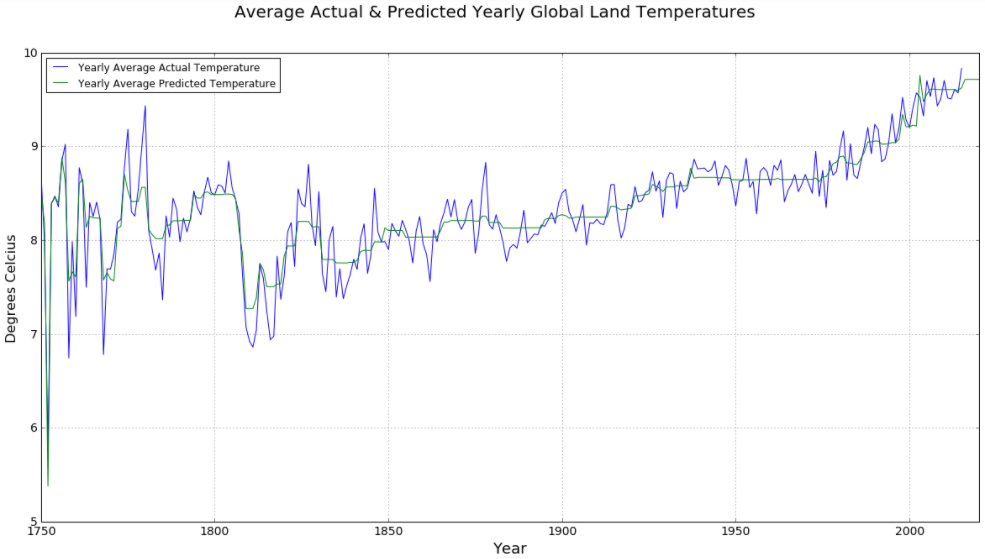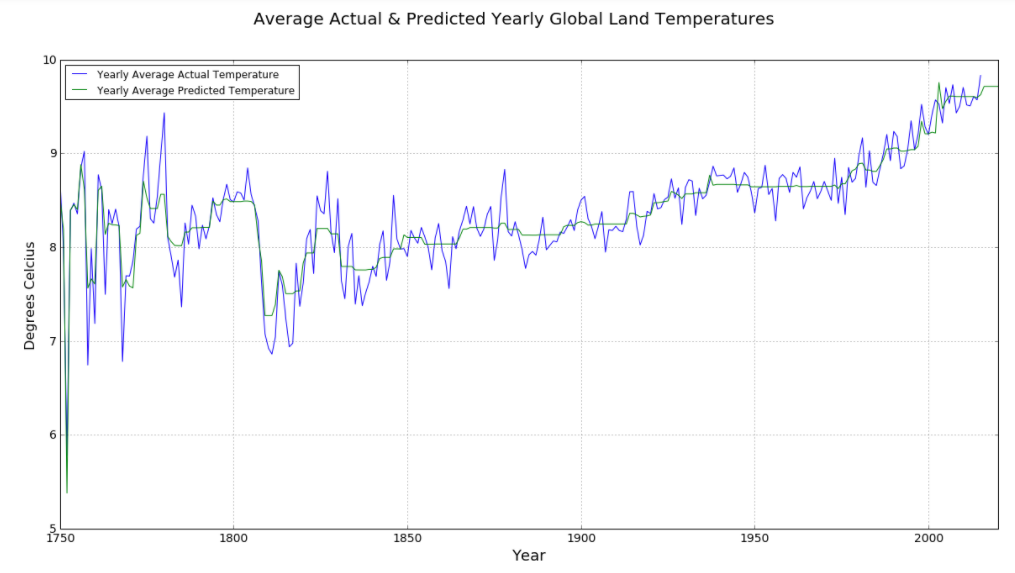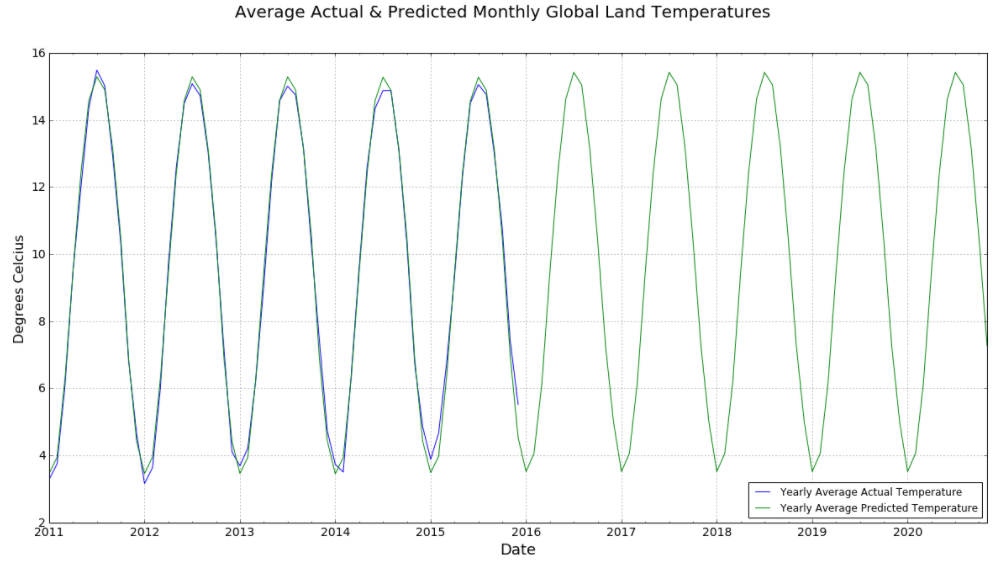Data files, code, and results for Genetic Algorithm Challenge by @Sirajology on Youtube
Use the TPOT library to make a discovery based on a question you pose. The question should be based on the Kaggle Climate Change Dataset (compiled from Berkeley Earth), but you get to choose the question.
The Climate Change Dataset on Kaggle contains several data files for land and ocean temperatures both globally and locally. I chose to address the following question:
What will the monthly global average temperatures be for the next 5 years?
I chose to use the file, GlobalTemperatures.csv, which contains global average land temperatures in celsius for months from 1750-2015. Here is my process:
-
I cleaned the data using the script clean_data.py to produce a .csv file with features that I wanted TPOT to use and no missing data. The main feature I was interested in was the date (dt, in the original data file). I split the date column in to year, month and day. Here, I also renamed the target variable (LandAverageTemperature) as 'class'. The output of clean_data.py is cleaned_globaldata.csv.
-
I created a "fake" .csv file containing the years and months for which I wanted to make temperature predictions. This .csv file is called global_test.csv. The original data only runs until the year 2015, so in order to predict temperatures for the next 5 years, my test file contains dates for 2016-2020.
-
I wrote the script tpot-climate.py that read in the cleaned temperature data (cleaned_globaldata.csv), and applied the TPOT library to create a machine learning pipeline for predicting temperatures. This script also takes the test file of dates for which the temperature should be predicted (global_test.csv), and outputs the results file climate_results.csv with these predictions. It also outputs the TPOT optimized pipeline to climate_pipeline.py. The file output.txt is the standard out from running the tpot-climate.py script.
-
I used the outputted, optimized pipeline to see how it would perform when asked to predict monthly global land temperatures on the original data. I did this in predict_current.py to produce original_data_predictions.csv.
-
With all of the predictions from the optimized pipeline, I created some visualizations to understand TPOT's performance, and the climate data.
The resulting optimized pipeline from TPOT implemented FeatureAgglomeration and GradientBoostingRegressor, scoring 0.6283690079003942 MSE on the cross-validation portion of the training data.
The original data set (cleaned), shows that the global land temperature has been gradually increasing over time (averaged by year, below).
When we compare the original temperature data to TPOT's predictions, we see that TPOT does a pretty good job predicting global temperatures (averaged by year, below).
Finally, to answer the original question, we can look at the monthly temperatures for the next 5 years. These were predicted by the script tpot-climate.py.
- GlobalTemperatures.csv - Original data file of monthly average global land and ocean temperatures downloaded from Kaggle
- MonthlyPredicted.png - Figure of monthly temperatures for recent years predicted by TPOT
- YearlyOriginal.png - Figure of global temperatures, averaged by year, from the cleaned data file
- YearlyPredicted.png - Figure of global temperatures, averaged by year, for original and predicted values
- clean_data.py - Python script I used to clean the original data file, GlobalTemperatures.csv.
- cleaned_globaldata.csv - Output from clean_data.py. Contains cleaned data from original data file.
- climate_pipeline.py - Exported python script output from tpot-climate.py containing the TPOT optimized pipeline
- climate_results.csv - Output from tpot-climate.py. Contains temperature predictions for next 5 years.
- global_test.csv - 'Fake' data file used as testing set, for making 5 year future prediction
- original_data_predictions.csv - Output from predict_current.py. Contains orininal and TPOT predicted global monthly temperatures.
- output.txt - Standard out output from running tpot-climate.py
- predict_current.py - Python code I used to run TPOT on cleaned original data. Based on pipeline from climate_pipeline.py.
- tpot-climate.py - Python code I used to run TPOT on training and test data.
- visualizations.ipynb - Jupyter notebook of code I used to create the figures.


